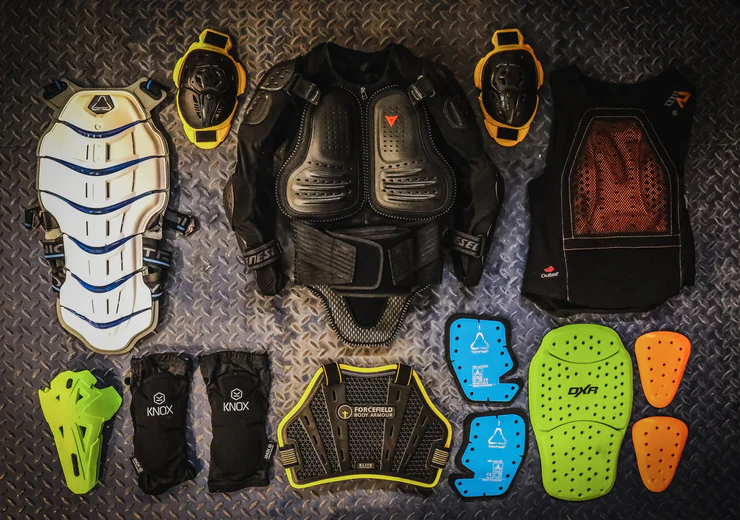Blog
CE Armor Levels: A Beginner-Friendly Guide

When it comes to motorcycle safety gear, protection is everything. Whether you’re a beginner or a daily rider, understanding CE armor levels can help you choose the right gear for maximum safety on the road.
In this guide, we’ll explain CE armor levels in simple terms so you know what to look for in motorcycle jackets, pants, and suits.
What Does CE Mean in Motorcycle Armor?
CE stands for Conformité Européenne, which means “European Conformity.” It’s a safety standard used in Europe (and accepted worldwide) to rate protective gear.
When gear is CE-certified, it has been tested to meet specific safety requirements—especially for impact protection in case of a fall or crash.
Why CE Armor Matters
CE armor protects key parts of your body like:
- Shoulders
- Elbows
- Knees
- Hips
- Back
- Chest
Choosing armor with the right CE level ensures you’re getting tested, reliable protection that could save your life.
The Two Main CE Armor Levels
There are two main CE armor levels used in motorcycle gear:
CE Level 1
- Lighter and more flexible
- Offers basic protection during impact
- Good for urban riding or casual use
- Allows better comfort and airflow
CE Level 2
- Thicker and more protective
- Provides advanced protection
- Ideal for high-speed or long-distance riding
- Common in track suits and touring gear
CE Armor Zones
CE ratings also cover different zones on your body:
- Zone 1: High-risk areas (shoulders, knees) – needs strong protection
- Zone 2: Medium-risk (hips, thighs) – still needs armor
- Zone 3: Low-risk (back, chest) – optional but recommended
Understanding these zones helps you decide which parts of your gear need top-level armor.
How to Identify CE Armor Labels
Look for the CE label printed or stitched into the armor. It includes:
- The CE logo
- Level (1 or 2)
- EN number (e.g., EN 1621-1 or EN 1621-2)
- Type of protection (back, knee, shoulder, etc.)
This tells you the armor has been tested and certified to meet European safety standards.
Which CE Level Is Right for You?
Choose CE Level 1 if:
- You ride mostly in the city
- You want lighter, more flexible gear
- Comfort is your top priority
Choose CE Level 2 if:
- You ride at high speeds or long distances
- You prioritize maximum protection
- You race or ride off-road
Upgrading or Replacing Armor
Many jackets and pants allow you to upgrade armor by swapping CE Level 1 pads with CE Level 2 options. It’s a smart move if you want more safety without buying new gear.
Also, inspect your armor regularly—replace it if it’s cracked, damaged, or over 5 years old.
Conclusion
Understanding CE armor levels is key to making smart choices about your motorcycle gear. Whether you’re buying a new jacket or upgrading an old one, always check for CE-certified armor.
It’s a small detail that makes a big difference in your safety.
Read More Custom vs. Off-the-Rack: Which Motorcycle Racing Suit Is Right for You
FAQS
What’s the difference between CE Level 1 and CE Level 2 armor?
Level 1 offers basic protection and flexibility; Level 2 provides thicker, more advanced protection for high-speed or long-distance riding.
Where is CE armor typically placed in motorcycle clothing?
CE armor is placed in high-impact zones: shoulders, elbows, knees, hips, back, and sometimes chest for maximum protection.
Can I upgrade CE Level 1 armor to Level 2?
Yes, most gear allows easy replacement. Simply remove Level 1 pads and insert compatible Level 2 armor for better protection.

